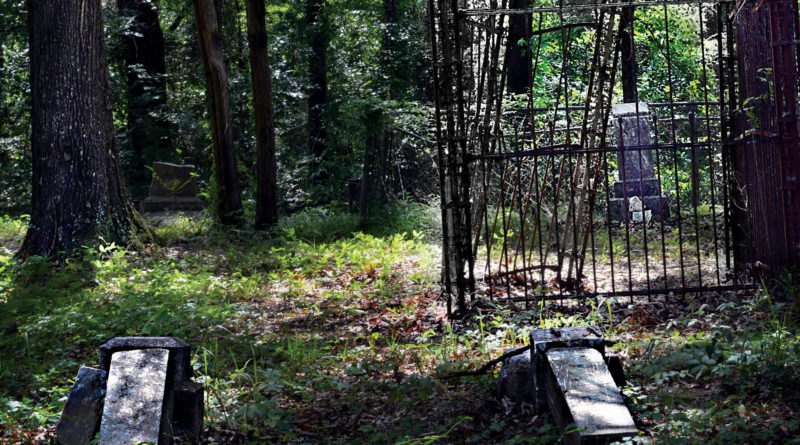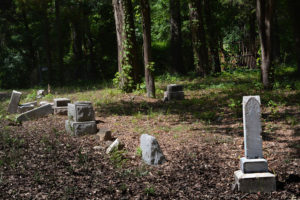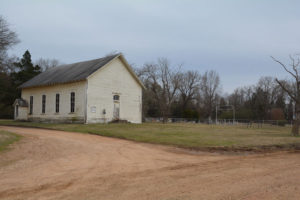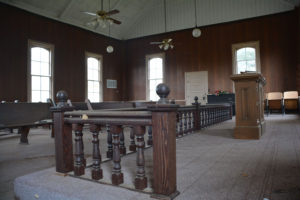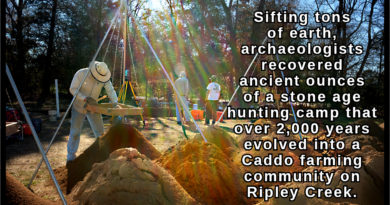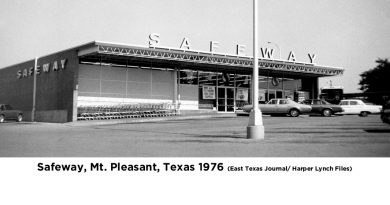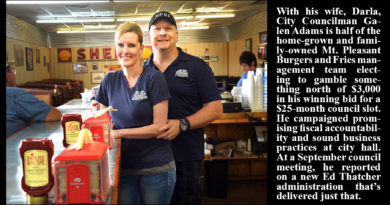Vampire Legend Haunts Dalby Springs Back Road

By GRETA REEVES
Special to The Journal
“Ever seen a vampire grave?” my friend Robyn asked.
“Well, no,” I said doubtfully. Robyn is intrigued by spooky and creepy things, things you can’t know, stories that have more questions than answers.
It was a good day for exploring backroads, and long enough ago that I can’t remember when we were exploring Dalby Springs.
Farm to Market Road 44 is a sleepy road into the southwest corner of Bowie County. Dalby Springs is most remembered for its mineral water. Going back to 1839, the on-line Texas Handbook of History describes a community with cotton gins, a post office, stores, a newspaper and a hotel to accommodate hopeful people drawn by reports of the mystical curative powers of the mineral springs.

There’s still a well. There’s a squeaky hand pump that will draw up dark, mineral infused water that’s naturally the color of tea. I would not recommend drinking it, nor do I intend to. It stinks with sulfur – really, really bad.
There’s a post card romantic church with a historical marker and a free-standing bell tower not far from the cemetery gates, which is where Robyn told me of another cemetery hidden a stone’s through through the woods from a dirt backroad.
Just under a mile west of the intersection of Texas Farm to Market Roads 44 and 519, Bowie County Road 4238 turns north into the overarching shade of trees lining an unpaved lane. Less than a mile into the forest, we stopped at a gate on the west side of the road, crawled under it and walked.
If I’d known I’d be writing this years later, I’d have made better mental notes. Knowing the country, Robyn took me to several old cemeteries that day. I remember the charred remains of an old building, a memory fitting with the story of a church that burned. There was an overgrown fence row we went through, into the dappled shadow of an opening in the woods where I saw the tombstones.
Robyn’s story, as it was told to her, was of the mysterious unmarked grave at a spot separated from others by a tall iron-spiked fence. She was still describing it when I saw it at the back of the cemetery.
“C’mon,” she said, knowing she had me in the spell of her tale. A six-by-eight-foot plot had once been fully enclosed – the gate was gone. She said it was removed after reports of local kids going in and getting trapped when the latch somehow locked. She said that there had once been a long iron stake driven into the grave, as if to keep whatever or whoever was buried there pinned for eternity in the earth. She said there were two flame holders atop two poles of the fence, at the back of the “cage.” She said that the flames burned throughout several nights of the year until they were stolen, taken away.

She said the grave ran on a north to south line, opposite the traditional way of Christian burial so that the vampire wouldn’t be able to see the face of the Lord returning in the clouds on Judgment Day.
That didn’t sink into my brain until we’d left, while I was Googling in search of answers and found the name of the cemetery: Cedar Grove.

I’m not one typically drawn into such stories, but this one has crossed my mind so many times through the years that the chance to write it was a chance to see if I might dig to the bottom of the mystery.
The internet is alive with accounts of the vampire tale at Cedar Grove. Each site told much the same story Robyn told me, some with more details, some with less. One common thread at each site was that none attached a name to the unmarked grave presumed to be within the fence.
I emailed those who’d given contact information with their stories, but had no luck until stumbling into findagrave.org. It was the antiquity of it – the dates of the birth and death that first caught my attention. Born in 1797, it said Elizig Williams was buried at Cedar Grove October 31, 1879 – wow! Halloween.
Fiance in tow for safety as much as helping me look, we read as many headstones as we could without finding Elizig. There was a weathered stone with “Mrs.” and “Williams” but we couldn’t make out the first name.
But it was next to the iron fence. Otherwise, I was at a dead end when one of my emails triggered a call.
Vampire, scampire, might be the executive summary.
“If they’d believed they were burying a vampire, why among Christians?” said a woman named Delores, who never answered when I asked her last name. But we talked for nearly an hour. Or why would a vampire want to be buried among Christians?
And an iron stake through the grave? The same as everybody knows it takes a silver bullet to kill a werewolf, everybody ever seeing a vampire movie or reading a vampire tale knows that you have to drive a wooden stake through a vampire’s heart to kill it.
The remnant of the burned building and old fence I’d remembered were gone when I went back before writing the story. Delores had family buried there and first hand knowledge that connected dots.
She said the original cemetery records were lost when the church burned, that the only records left were the stones themselves.

She believes the vampire story was concocted by caretakers to ward vandals away, fitting with the evidence of headstones overturned. She said she has generations of old family there, that her grandfather and her great grandfather had both been Methodist ministers.
It wasn’t what she told me, but what she asked me that put the wraps on my story.
“Aren’t vampires supposed to live forever anyway?” she asked.
Thank you, Delores.

